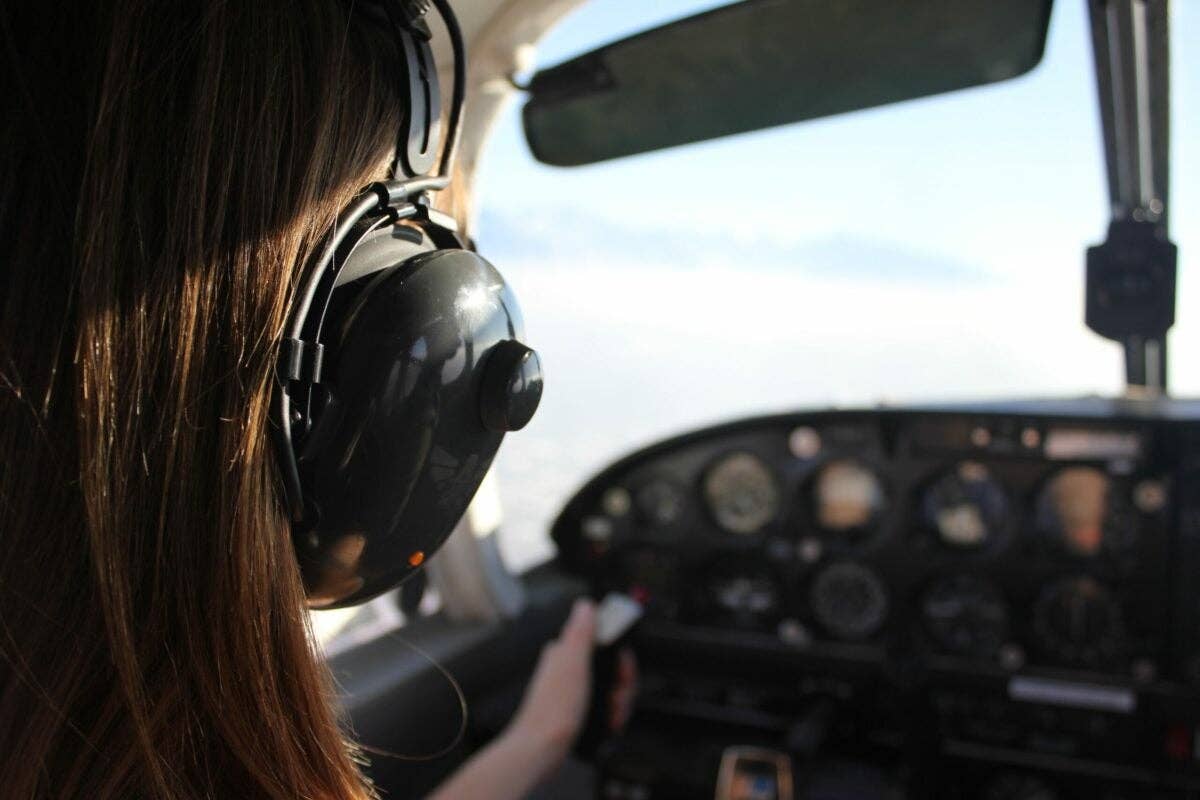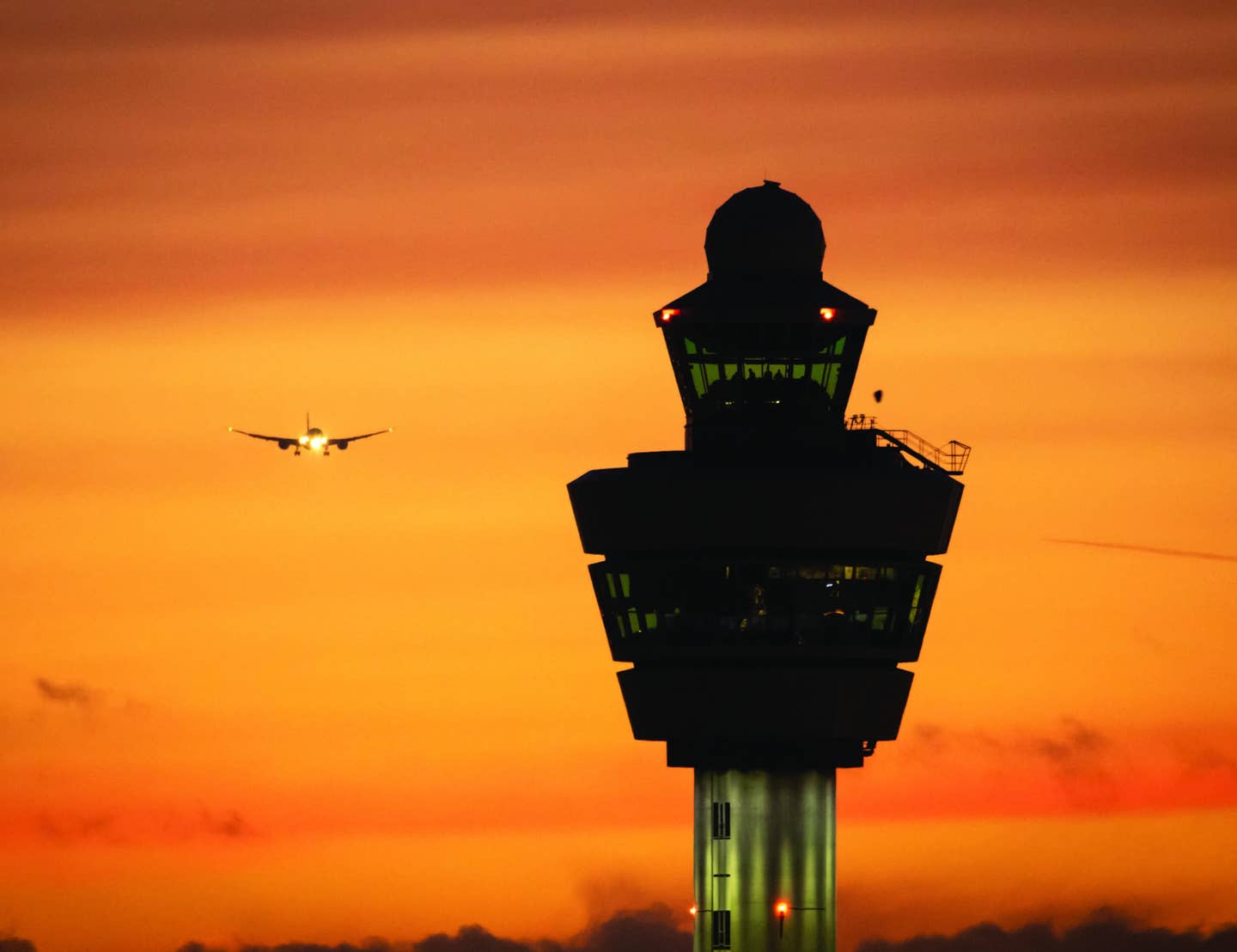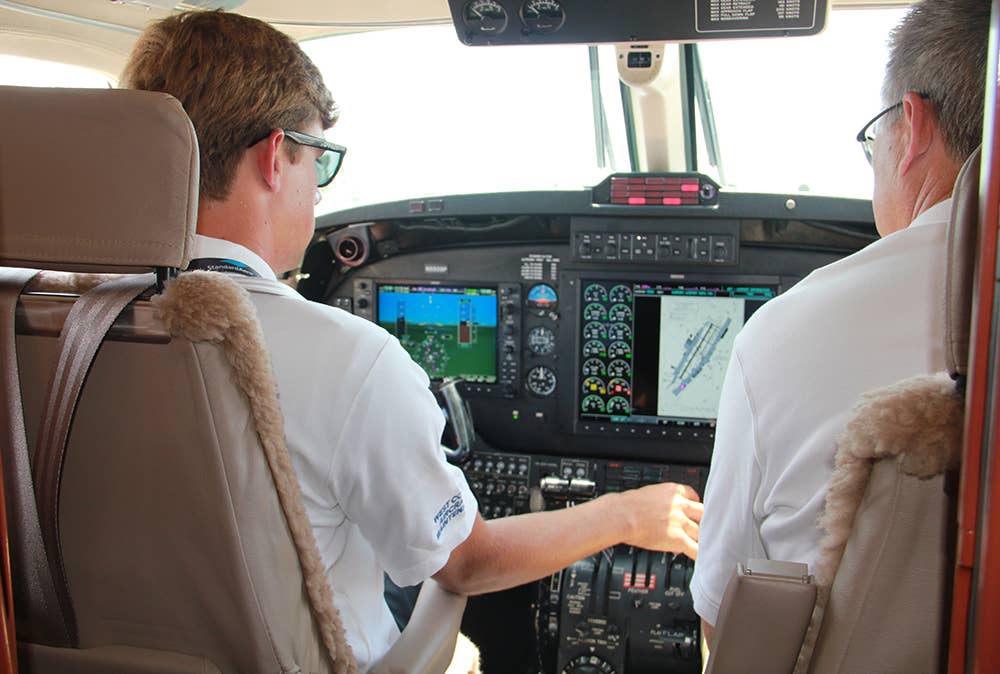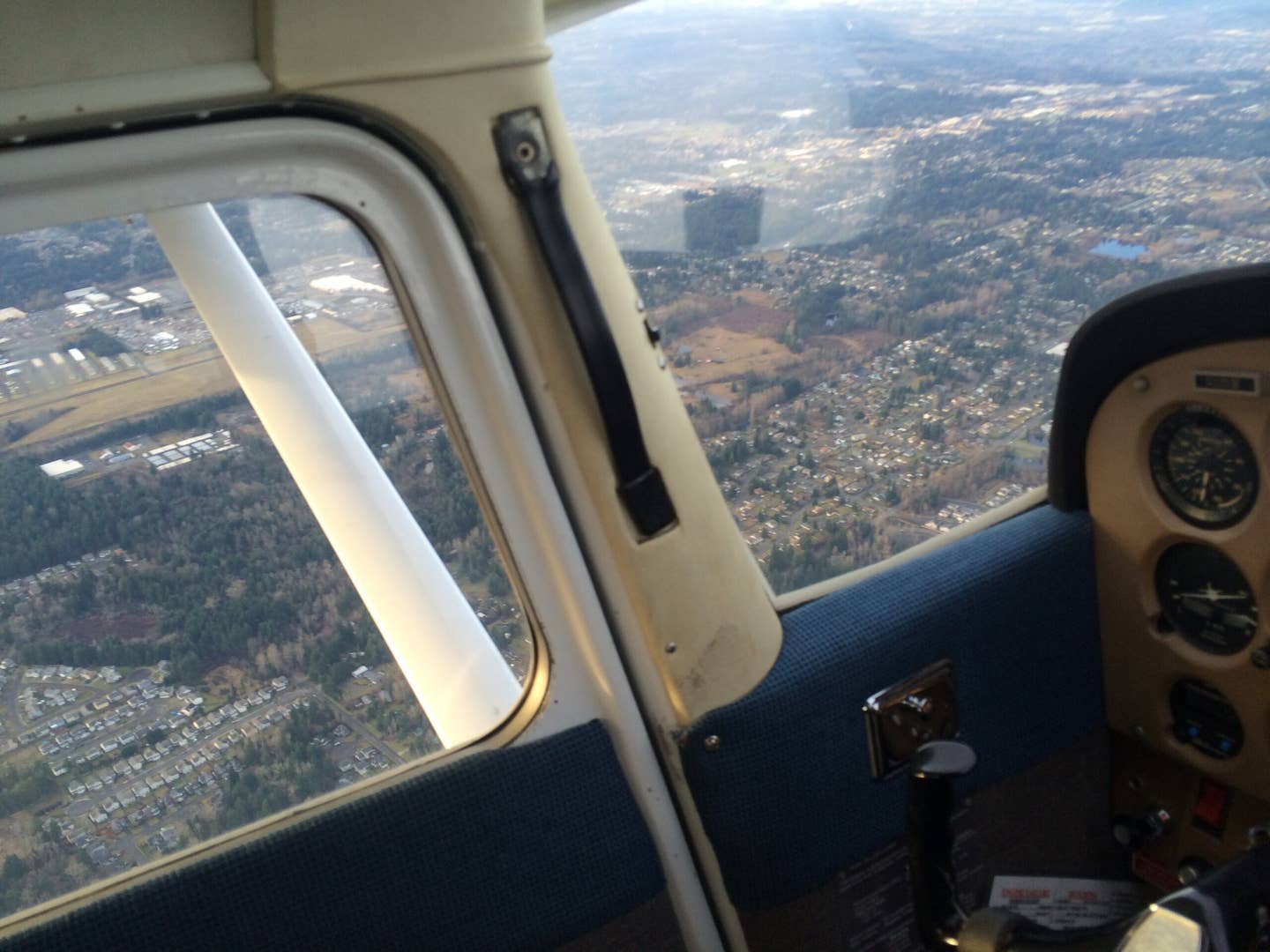How to Build Confidence Along With Hours
Here’s what a learner should know about the benefits of solo cross-country flights.

Solo cross country experience builds both skill and confidence. [Credit: Shutterstock]
It makes me sad when someone tells me how unprepared they felt during their first solo cross-country flight. More often than not, this happens because they felt rushed into their first solo, and lack confidence in their training. Some flight students have been pushed through the pipeline with minimal instruction and the boxes checked by the CFI who was also pushed through the pipeline.
I have been warned it is getting worse. Several designated pilot examiners (DPEs) I know have expressed dismay over a change in the Part 141 world where there has been a shift away from requiring solo cross-country flight once the learner has earned their private pilot certificate. Instead, the private pilot rolls right into the dual instruction for their instrument and commercial certificate flying with a CFI.
The learner, now fully certified, can legally act as the PIC, performing all duties and tasks required for the flight. Often this robs the applicant of solo cross-country experience beyond the solo hours they logged for their private certificate. This can be as few as five hours. This trend is unfortunate, because solo cross country experience builds both skill and confidence.
Prepare for Solo Cross-Country
It is troubling to encounter a learner who has logged dual cross-country flights with a CFI, but has not learned how to select a route, fill out a navlog, select an appropriate altitude, use an E6-B, or navigate without the use of the GPS. They rely on an app, or worse yet, their CFI to plan the flight.
One low-time CFI argued that because of GPS and apps, no one really uses pilotage, dead reckoning, E6-Bs, or VORs anymore, so the learners don’t really need to know them. This is not accurate. If it is in the airmen certification standards, it needs to be taught, and more important, it needs to be learned. There is a difference between the two.
While it is true that when and if the learner starts flying for a living, they will likely have all sorts of gadgetry in the cockpit to do the work for them. However, they are still hundreds, if not thousands of hours away from that. If you are the learner, insist that you are taught these skills.
Pilotage from Day One
CFIs can start preparing learners for cross-country flight even before the first solo by introducing the art of pilotage as they fly to and from the practice area. Point out the landmarks that help define the route. You want things that stick out like a frog in a punch bowl. Talk about appropriate altitudes that enable you to see the landmarks.
One of my favorite tricks is to take the aircraft south of a particular airport surrounded by trees. We are at an altitude of 2,000 feet msl. I ask the learner to locate a particular airport by looking out the window. Can’t see it? Let’s do a 360-degree turn to the left at half standard rate. Keep looking — still can’t see it? Now let’s climb up to 2,400 feet. Do that turn again—there it is!
These pilotage flights also teach the learner what makes a good checkpoint from the air. Clearcuts on hillsides, and power lines usually don't, especially when you are below 2,000 feet agl, because they all look alike.
It can be very helpful to do a flight where you note the airspace changes as you pass over certain landmarks. For example, in my part of the world, if we are heading westbound toward Tacoma and flying parallel to the Puyallup River at an altitude of 1,800 msl, as long as we are south of the river we are not in the Seattle Class B. If we are north of the river, we’re in it.
Cross-Country Ground Lesson
CFIs may find it helpful to split the dual cross-country lesson into parts. At least one hour should be spent on how to pick out a route, select altitudes, fill out a navlog, and determine aircraft performance. Expect more than an hour on the ground if the learner has never used the E6-B flight computer before, be it the mechanical version or the electronic. The directions are printed on the unit and if you can read, you should be able to do the calculations.
Discuss how to file, open, and close a flight plan; how to obtain flight following; and how to divert if needed. Make sure to discuss the reasons a divert might be needed, such as weather, a mechanical issue, fuel, etc. It's important to remember this is not the last chopper of Saigon—if the weather starts to deteriorate, turn around. Decision-making skills are part of your training.
Pro-tip: The cross-country ground lesson is a great time to review aviation weather. Per FAR 91.103, the learners are supposed to check the weather prior to takeoff and determine aircraft performance. The best instructors introduce this concept early, well before the first solo, so the learner doesn’t feel sandbagged at this phase of training.
CFIs need to be sure the learners understand the limitations of the cross-country solo endorsement. One learner was under the impression that the solo endorsement meant he could take the airplane on his own and go anywhere and didn’t need to involve a CFI at all. When the CFI explained the limitations on the solo endorsement—such as having to have a CFI review his cross-country flight planning before he could launch and showed him the regulations regarding student solo flight—the learner was surprised, as his plan was to get the solo endorsement to make an out-of-state flight to visit relatives.
I’m not a fan of signing the learner off for solo cross country the night before the flight because the weather can change. If I need to, I will make arrangements with another CFI to handle the review. CFIs: when you review their flight plan and give the endorsement, note weather checked as of (insert time of weather check). This protects the CFI should the weather go unexpectedly bad.
Choose Your Destination
In Part 141 programs there is a list of approved airports the learners fly to. This list doesn’t exist for Part 61 programs, so it is during this lesson that I suggest the learners make a list of airports they want to visit, and encourage them to create preloaded navlogs. The landmarks and distances between them won't change. The day of the flight the learner just has to drop in the weather and "spin the winds" to determine ground speed.
The Flight
For best results, during the first dual cross country, the CFI should keep the chatter to a minimum. If altitude is contrary to the hemispheric rule, or there is a safety of flight challenge, the CFI should bring it to the learner’s attention, but ideally, the CFI should be quiet and observe, although I do have a rule that is ATC has to repeat themselves and the learner is buried, I will handle the radio.
Teach the learners to file a flight plan and obtain flight following. Sometimes, ATC will be too busy to provide flight following, but that doesn’t mean you can’t monitor the frequency and listen for aircraft in your vicinity.
Close the Flight Plan
Some CFIs tell their learners not to use flight following because if they forget to close their flight plan, “they” come looking for you, and you will get in trouble. This is not entirely true. The idea of having an open flight plan is protection for the pilot—if you are overdue and in a bad situation, you will want someone to come looking for you. If you forget to close your flight plan there might be a phone call with a scolding in your future, but no one has ever died from one of those. Most of the time ATC is just happy that the system works.
Keep tabs on your en route time. As you do ground speed checks during the flight (and you should) and realize you are going to be overdue, it is fairly easy to update your ETA. You may have to change radio frequencies, but it is doable. Don’t sacrifice safety to play Beat the Clock.
Leidos Flight Service has close reminders, which sends a reminder to close their flight plan. Some learners set a timer on their smartphone. I advocate removing your wristwatch from its regular position and putting it on the other wrist— this feels awkward and weird but it is a good reminder for any task. Also, it doesn’t have to be a wrist watch. One of my learners had a friendship bracelet he moved to the other wrist as a reminder.
One of my learners (a doctor) wrote "CLOSE FLIGHT PLAN" on a post-it note and put it in the waistband of his pants, because after he lands he goes right to the restroom. As one would guess, he found the reminder and made the call. Do whatever works for you.
As you build your solo cross-country hours you will also be building your confidence and pilot-in-command skills. Make the most of it.

Sign-up for newsletters & special offers!
Get the latest FLYING stories & special offers delivered directly to your inbox






